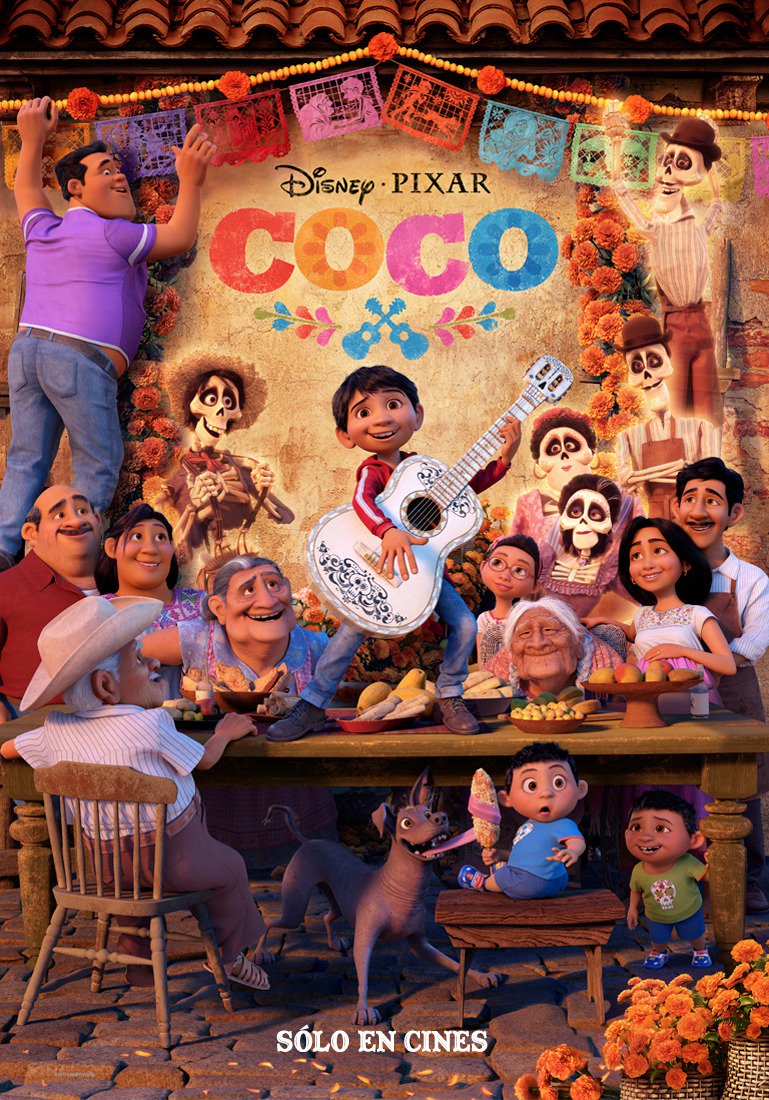Coco and Mexican Culture
Posted on November 29, 2017 at 3:57 pm
Slate has a great guide to the cultural references in “Coco” that people who are not of Mexican heritage might miss. (Note that co-director Lee Unkrich has responded to one of the points in the Slate article, saying that the use of both Dia dos Muertos and Dia de los Muertos was intentional to reflect the support for both they found in their research.
And this piece by Manuel Betancort about watching “Coco” with a Spanish language soundtrack made me sorry I don’t speak Spanish. He says that “Coco” is “Pixar’s most culturally specific movie in their lauded pantheon.”
Here at last was the kind of dubbing that didn’t feel like it was mangling, or weirdly bending the original into something it was not. It just had its characters talking (and singing) in the very language they were meant to speak. There’s a difference, for example, in hearing Miguel’s family talk about ofrendas (a word that always feels like it’s being italicized by its voice performers when speaking English, eager as they surely are to make it clear it’s a Spanish expression many may not be familiar with), and quite another to see that word just roll along in dialogue that doesn’t needlessly highlight it.
That’s perhaps even truer when it comes to Hector, the bumbling skeleton that Miguel befriends while in the Land of the Dead, and to Ernesto de la Cruz, the famed musical legend the musically inclined young boy admires and hopes to find while in that fantastical world. The former may be voiced by García Bernal in both versions (he’s one of a handful of actors who made good use of his bilingualism to score a double gig) but the latter, played by Benjamin Bratt, was dubbed by Marco Antonio Solís. And not to diminish Bratt’s singing abilities, but it truly is something else to hear the Pedro Infante-like character be portrayed by one of Mexico’s most recognizable voices.

